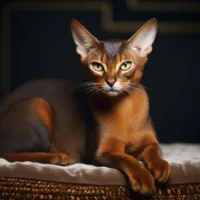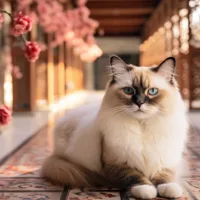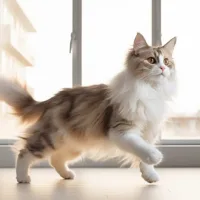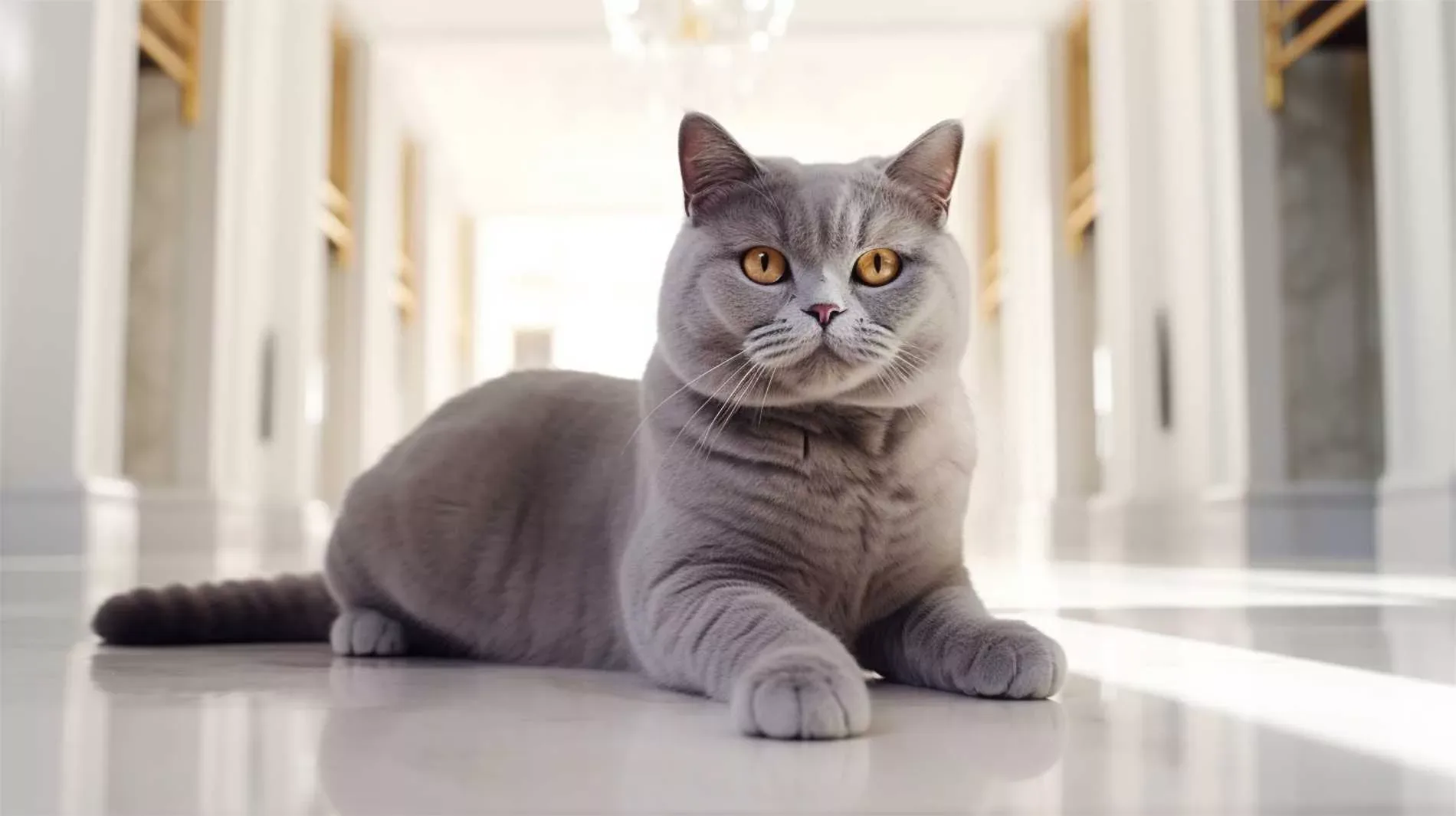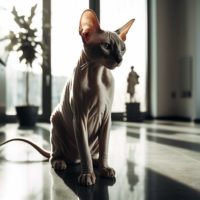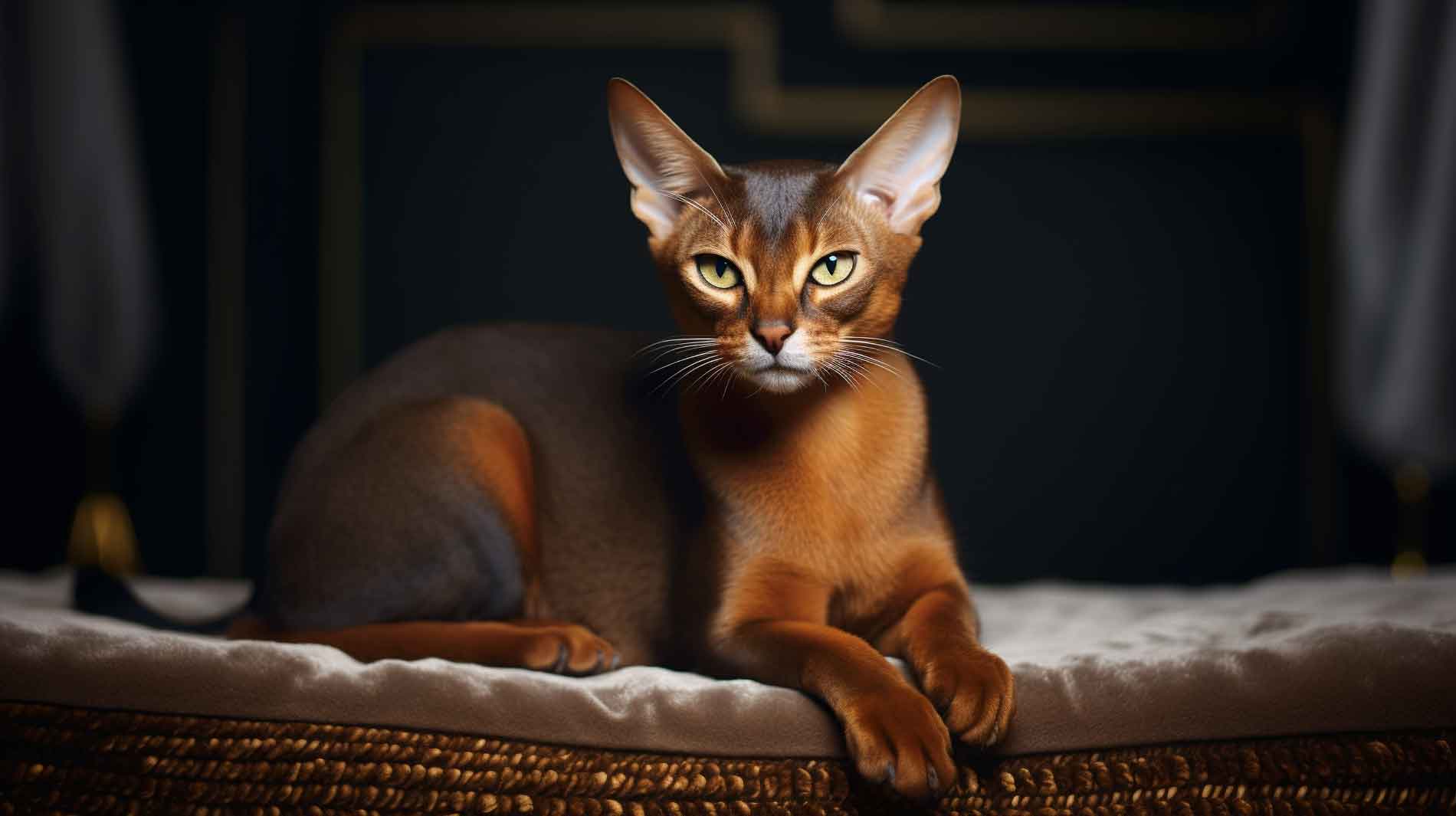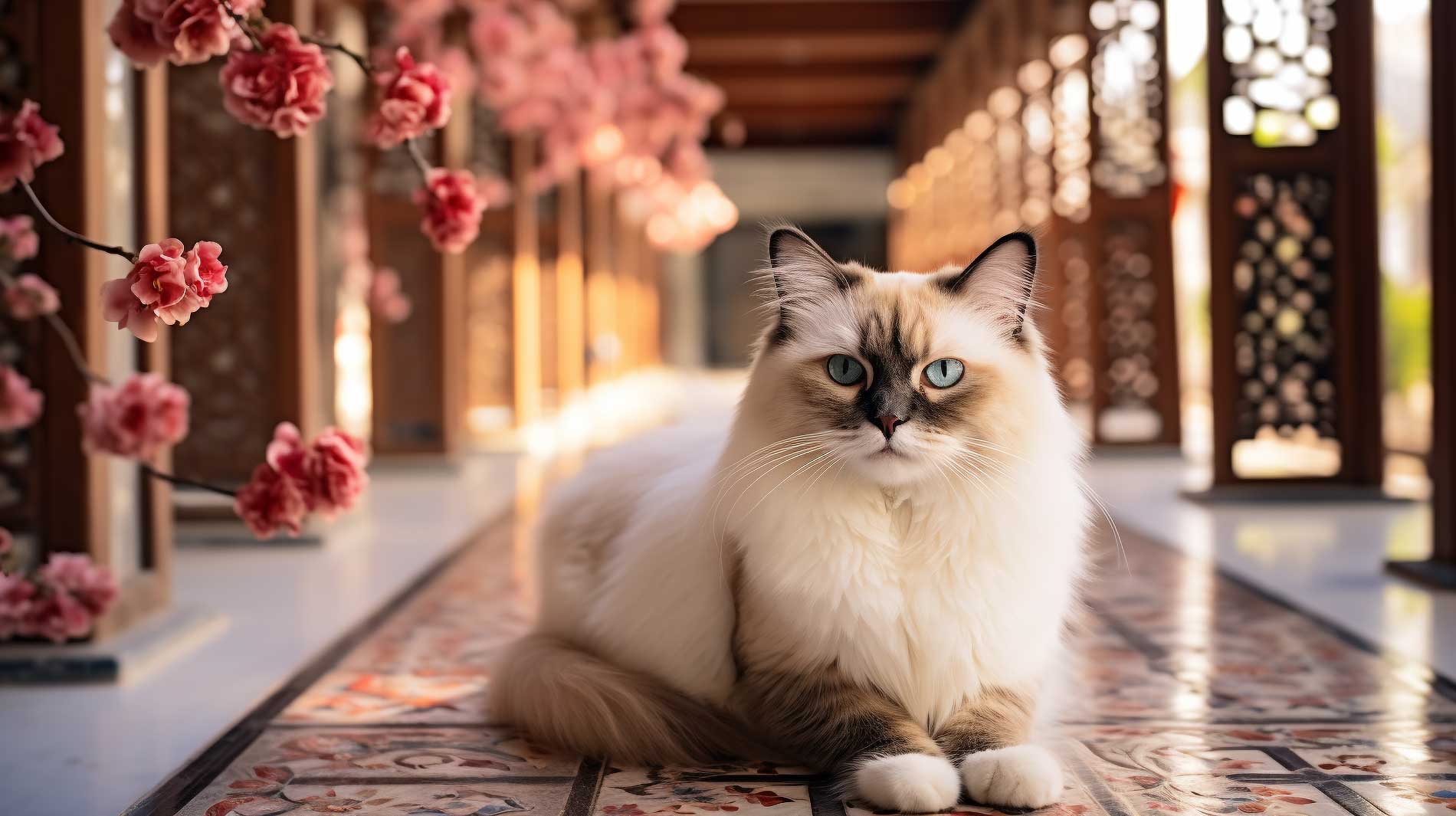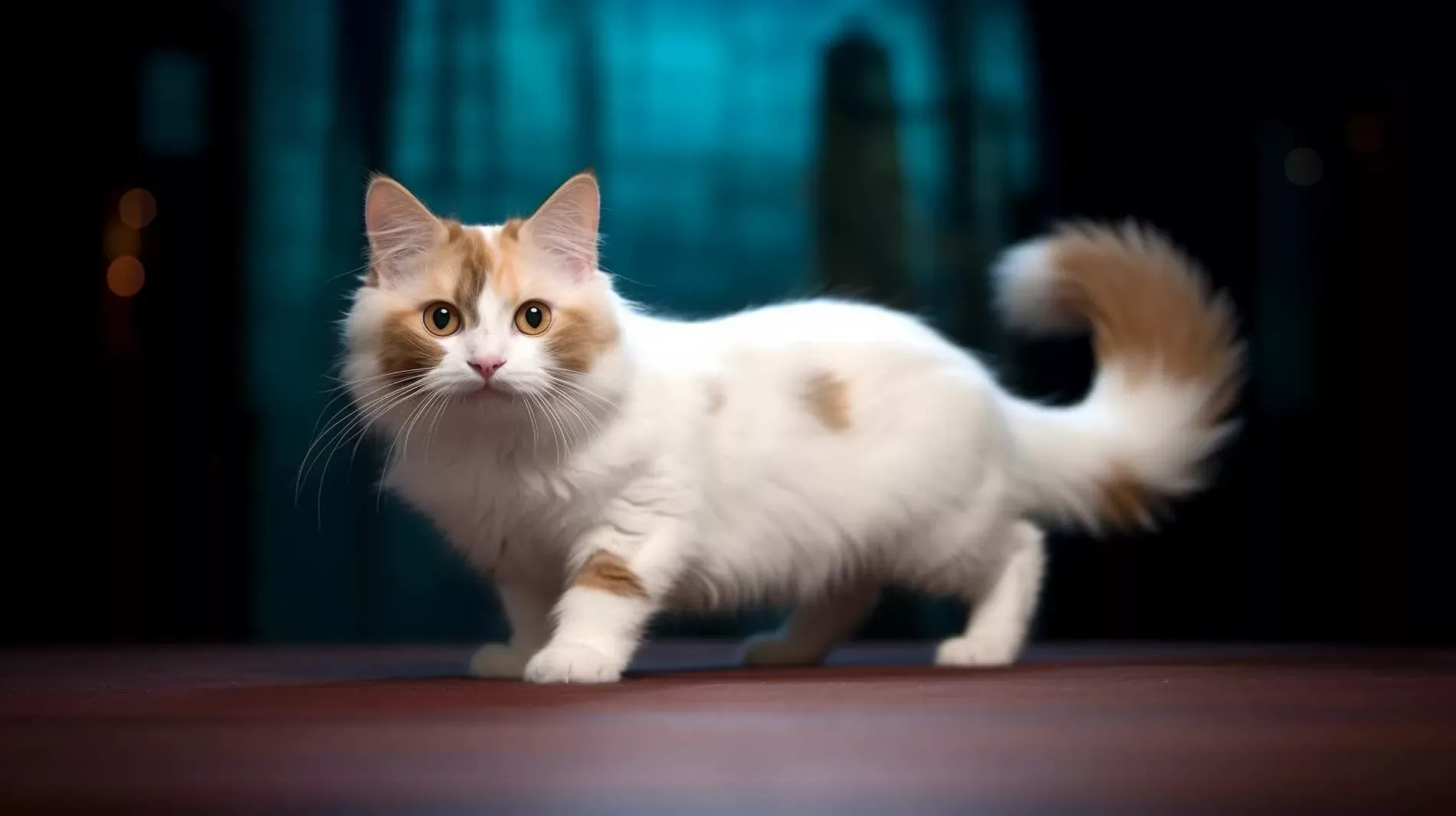British Shorthair look & fur – a plush teddy bear in cat’s clothing
This breed is as old as it is charming. With her robust physique, rounded features, and plush, dense coat, this cat often draws comparisons to a cuddly teddy, her round paws quietly padding about. Her tail, thick and tapered, ends in a rounded tip. The head is a perfect sphere with ears spaced apart just right, and her cheeks are like two little pillows, above a firm, pronounced chin. The eyes are captivating – large, round, and oh-so-expressive. And the nose? It’s just the right size, not too slender, not too broad. As for the coat, it’s a dense layer of short fur, as snug as a well-woven rug. As the cat moves, a noticeable pattern of breaks forms in the fur, adding an intriguing visual element to her overall appearance. Brush your fur ball once a week using a soft slicker brush to keep their coat in top condition. During seasonal shedding, you may want to brush it daily to remove loose hair before it ends up all over the house. Trim her nails every other week and check her ears weekly.
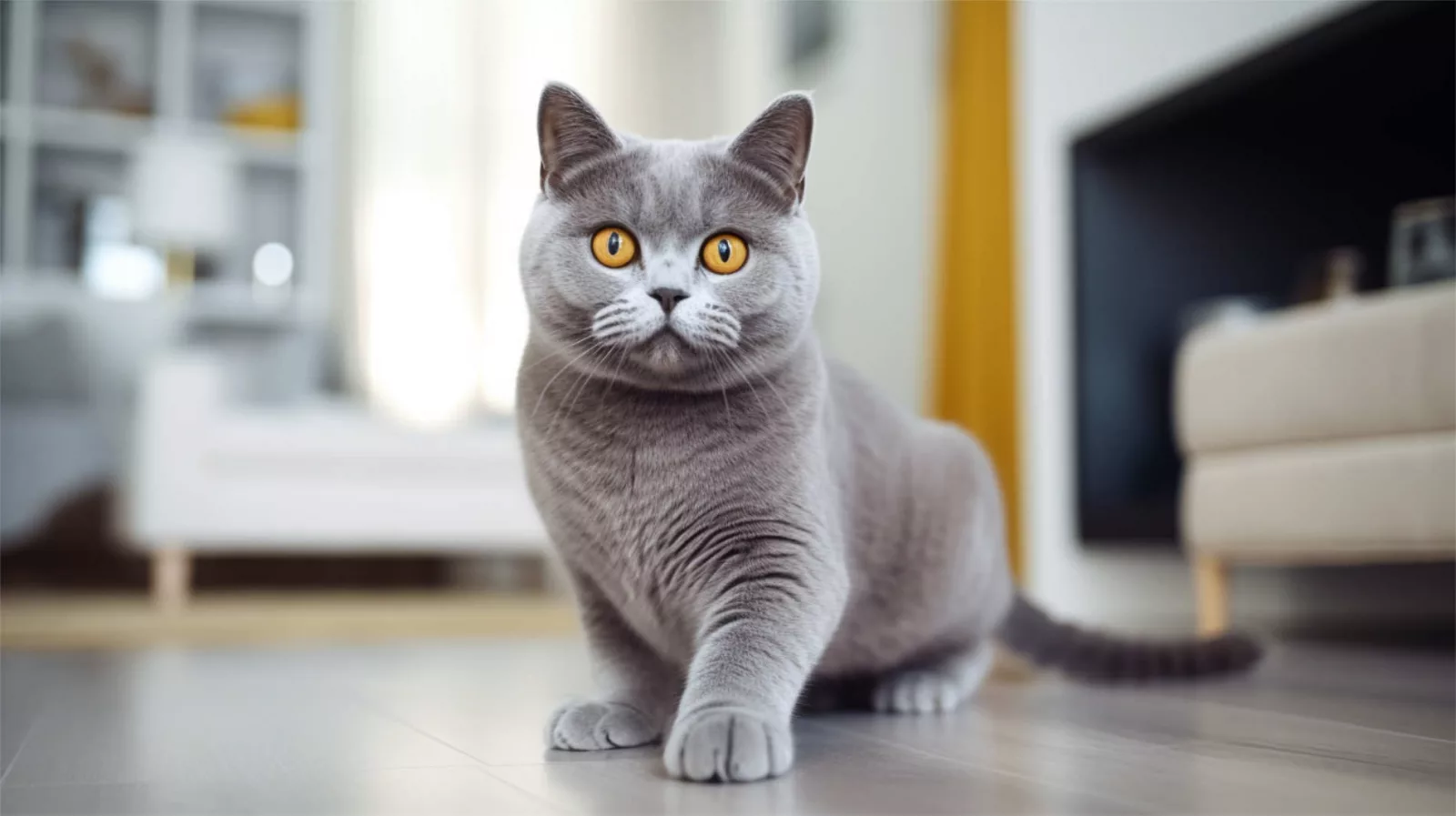
The ladies of the breed tend to be a bit smaller and daintier, while the gents are fuller with more noticeable jowls. And here’s a fun fact – these cats are the epitome of ‘slow and steady wins the race’, taking a good 3 to 5 years to reach their full weight and size. But trust us, it’s worth the wait. They mature into a perfect balance of proportions, with no exaggerated features, just a harmonious blend of all things cute and cuddly.1
Although many British Shorthairs were originally blue (a gray hue), the modern breed comes in a wide array of colors and patterns, from solid hues to tortoiseshell and calico.
British Shorthair health – a sturdy breed with a heart of gold
We’re looking at a notably healthy breed, with an average lifespan of between 15 to 20 years. They are known for their resistance to many genetic illnesses. However, like all breeds, individual cats can become sick or develop health conditions.
Polycystic kidney disease (PKD), a genetic condition causing cysts in the kidneys, is the most common inherited disease in cats, including this breed. Another concern is urolithiasis, or urinary stones, particularly calcium oxalate stones, which these cats are more prone to develop as they share some genes with the Persian cat (see below under “British shorthair history”).2
Apart from that, Hypertrophic cardiomyopathy (HCM) is a heart disease that can affect this breed. In one study, about 8.5% of British Shorthairs showed signs of this condition. Male cats seemed to have a higher risk.3
Regular veterinary check-ups are essential to ensure a healthy and happy life for your cuddle bug.
British Shorthair diet – a little prone to be thick
British Shorthairs are solidly built cats, but it’s best to keep them at a lean, healthy weight in order to prevent weight-related health issues, such as diabetes and heart disease. Apparently, the males tend to take on a little too much weight after neutering, so you should keep an eye on that. It’s important to provide a balanced diet appropriate for their age, size, and health status. A good example of a well-rounded feed that provides biotin and animal fat, supporting the breed’s shiny coat is Dynasty Emperor Duck.
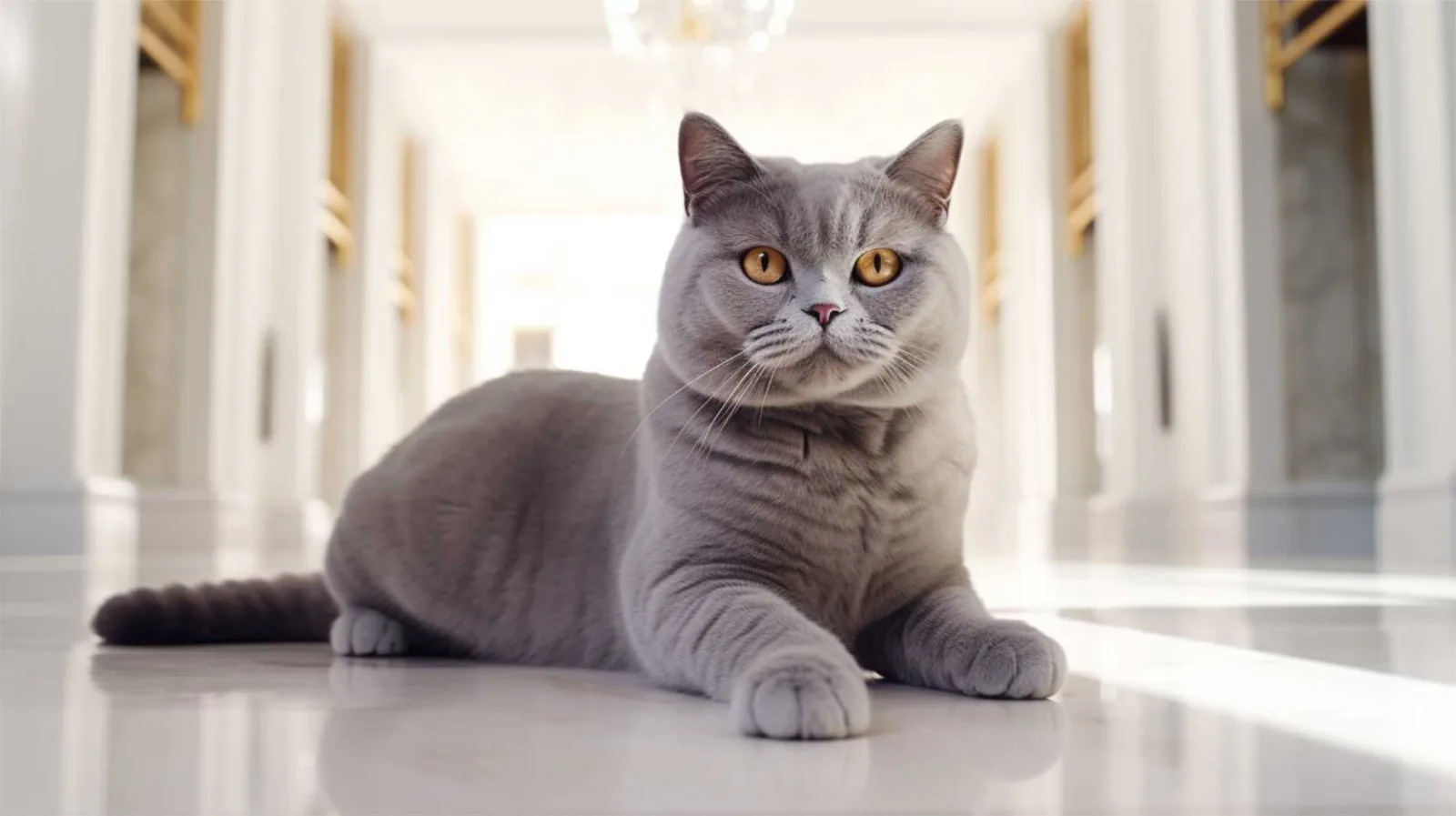
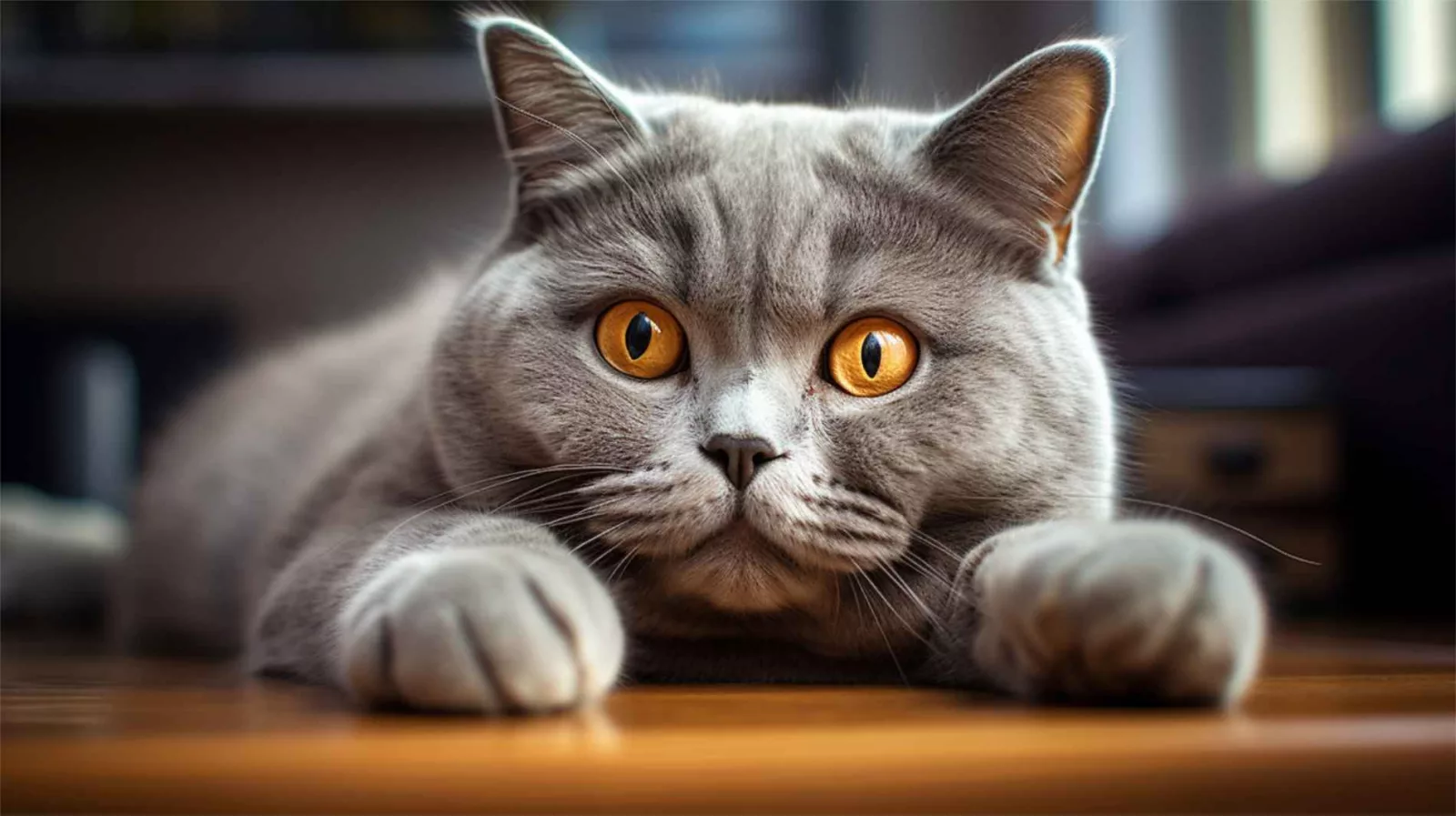
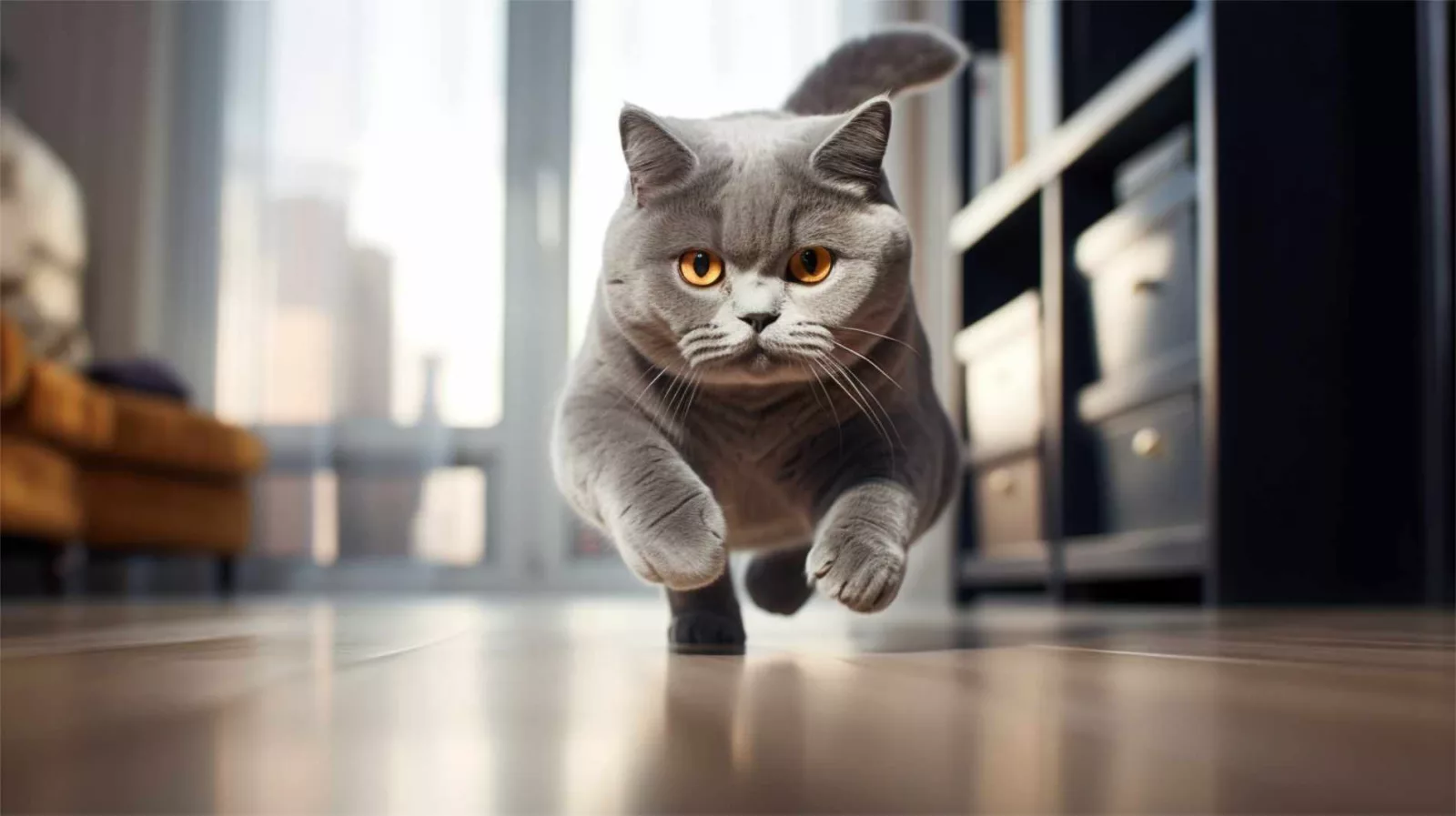
British Shorthair character – the easygoing aristocrat of the feline world
Cats of this breed are known for their easy-going personalities. They generally get along with everyone, including kids and other animals. They strike the perfect balance between being active without being hyperactive, and they tend to be quiet and undemanding, making them perfect companions in almost any kind of housing, including apartments. Additional to their quiet nature, they are moderately intelligent and playful and tend to have a rather squeaky voice. While they might not be the most lap-oriented breed, their calm demeanor and occasional displays of affection make them the perfect low-maintenance Sweeties.
Engage your British Shorthair with feather wands, mouse toys, or cat teasers to entertain her. Ensure your fluffball has plenty of things to climb and perch upon like cat trees, cat-friendly bookshelves, and kitty condos. Set up several good scratching places in the house, including vertical scratchers (such as tall posts or cat trees) and horizontal scratchers (such as cardboard or sisal scratchers that lie flat on the ground).
British Shorthair history – from backstreet cat to worldwide fame
This breed originated from the African wild cat, Felis Silvestris Lybica, brought to Britain by the Roman Empire approximately 2,000 years ago. These cats, originally from Egypt, were used to control rodents in conquered lands. The early progenitors of the British Shorthair had long, graceful bodies and sandy brown or yellow-gray ticked coats.
Over time, they interbred with the European wildcat (Felis Silvestris Silvestris) leading to changes in both body and coat style to suit the colder European climate, resulting in thicker coats, rounder heads, and more compact bodies. These cats served as efficient pest control in Britain for centuries.
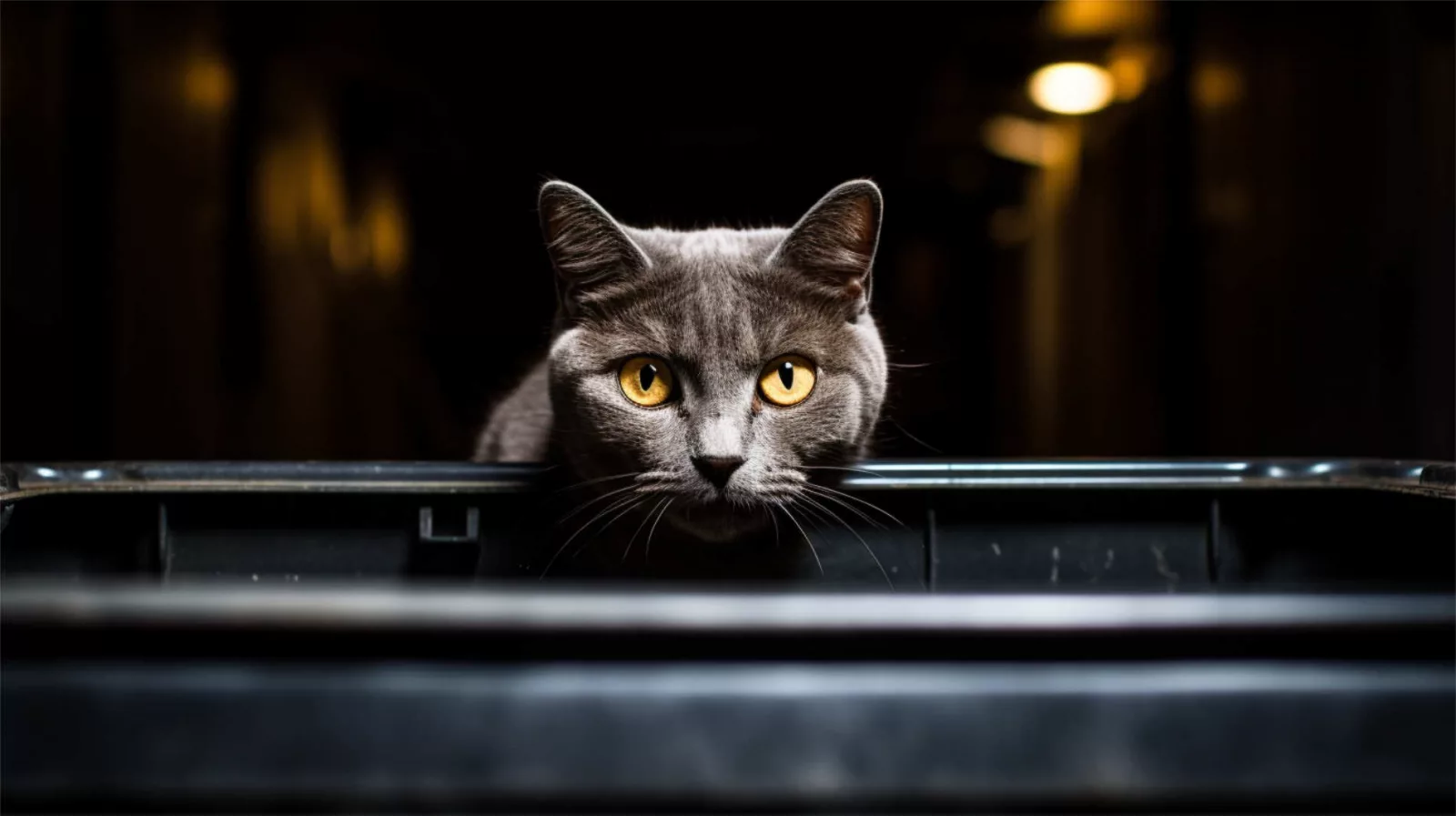
In the 1800s, British cat owners started to value these hardy alley cats for their beauty, strength, and companionship. The British Shorthair evolved into a robust breed, gaining recognition as its own breed in the late 19th century through the efforts of cat enthusiast Harrison Weir. Thanks to him, the breed was among those exhibited at England’s first organized cat show in 1871, back when it was commonly known as the British Blue due to the prevalence of the blue fur color.
The ordinary garden cat has survived every kind of hardship and persecution. That he exists at all, is tribute to his strength of character and endurance.
Harry Weir
The breed’s popularity declined around the turn of the century and was severely impacted by World War II. Post-war, breeders received permission to crossbreed British Shorthairs with other breeds to revive the gene pool. After several generations, they succeeded in restoring the breed’s original traits. Due to the influence of Russian Blues, Chartreuxes, and blue Persians in the bloodlines, blue became the dominant color, leading to the breed being the most popular cat breed, especially with blue fur.4
Suitable for cat beginners with city apartment and full-time work
- Experience level: Low
- Housing: Apartment
- Activity level: Medium
- Energy level: Medium
- Trainability: Medium
- Attachment: Low
- Friendliness: High
- Playfulness: Medium
- Talkativeness: Low
- Intelligence: Medium
